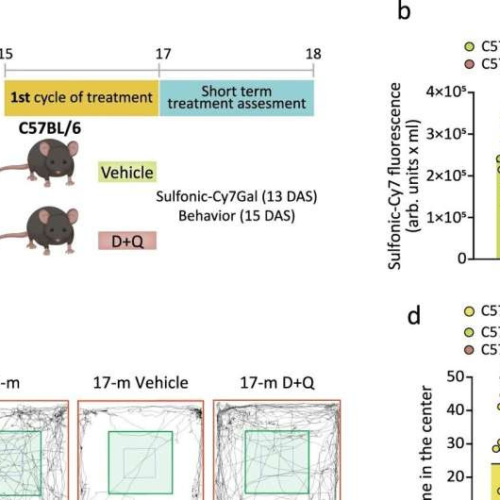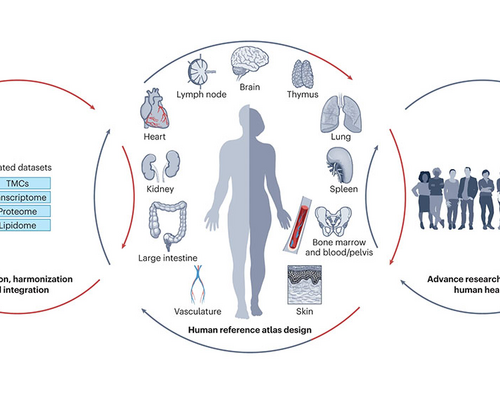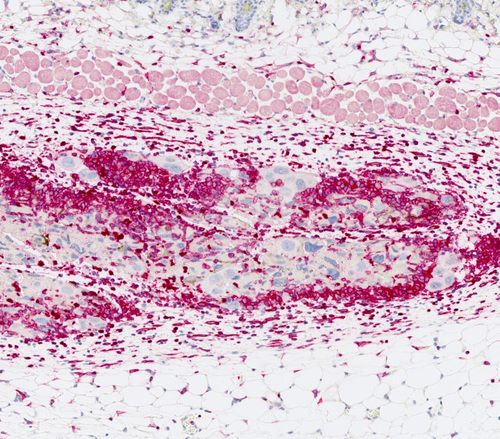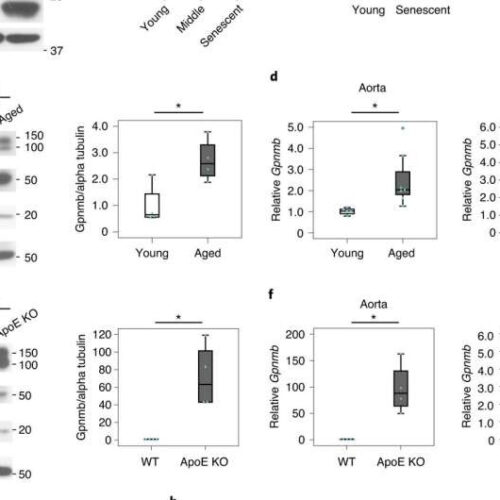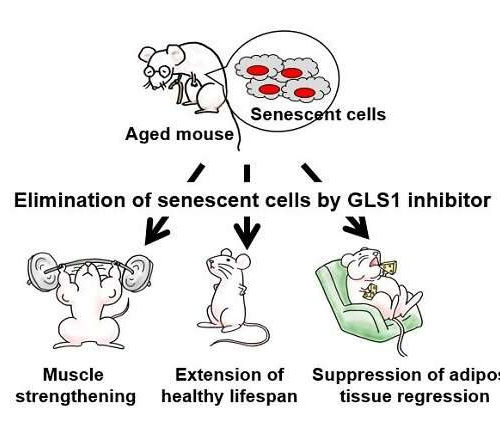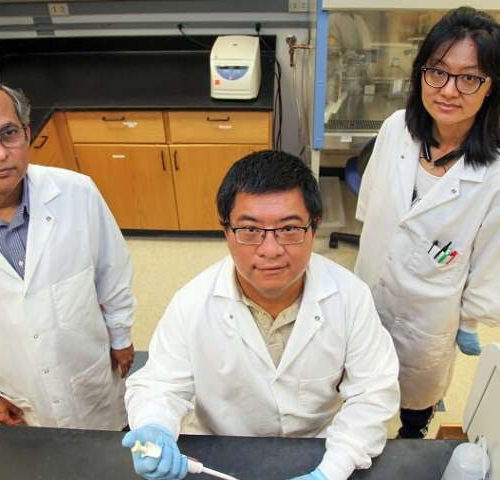by Universitat Politècnica de Valènci Monitoring of senolytic intervention with the sulfonic-Cy7Gal probe during natural aging. a Schedule of the senolytic treatment and its monitoring in C57BL/6 mice. 15-m mice received the senolytic drugs D + Q or the vehicle for 5 weeks and, 13 days after senolysis (DAS), the overall β-Gal activity was assessed with sulfonic-Cy7Gal...
Tag: <span>Senescent cells</span>
Multi-institutional collaboration unveiling the mysteries of senescent cells and their effect on aging and human health
JACKSON LABORATORY IMAGE: THE NIH SENNET CONSORTIUM AIMS TO MAP SENESCENT CELLS THROUGHOUT THE HUMAN LIFESPAN TO UNDERSTAND PHYSIOLOGICAL HEALTH. CREDIT: THE JACKSON LABORATORY Bar Harbor, ME/Farmington, CT—Multiple researchers at the Jackson Laboratory are taking part in an ambitious research program spanning several top research institutions to study senescent cells. Senescent cells stop dividing in...
Senescent cells as vaccines against cancer
INSTITUTE FOR RESEARCH IN BIOMEDICINE (IRB BARCELONA) IMAGE: IMMUNE CELL INFILTRATE (IN DEEP RED) AROUND SENESCENT CANCER CELLS (LARGE NUCLEI MARKED IN BLUE). CREDIT: IRB BARCELONA Researchers at IRB Barcelona report that the induction of senescence in tumour cells strongly stimulates the immune system. Vaccination with senescent cells significantly reduces the development of tumours in...
A Discussion of Applying Partial Reprogramming to Senescent Cells In Vivo
Partial reprogramming exposes senescent cells to the Yamanaka factors for long enough to reset their epigenetic patterns to those of a youthful cell, but not so long as to force a change of state into induced pluripotent stem cells. This is an active area of research, not yet an exact science in practice, and the...
Clearance of Senescent Cells is a Promising Approach to the Treatment of Alzheimer’s Disease
Today’s open access review discusses the growing burden of cellular senescence with age in the context of brain tissue and neurodegenerative disease. Cells become senescent constantly throughout life, largely the result of ordinary somatic cells hitting the Hayflick limit on replication, but also, and increasingly with age, due to a stressful, damaging, inflammatory environment. Senescent cells serve a useful purpose when present...
A new vaccine that alters senescent cells in a way that pushes the immune system into removing them
by Bob Yirka, Medical Xpress Fig. 1: GPNMB is a potential candidate of seno-antigen. Credit: DOI: 10.1038/s43587-021-00151-2 A team of researchers affiliated with a large number of institutions in Japan has developed a vaccine that tricks the immune system into removing senescent cells. In their paper published in the journal Nature Aging, the group describes...
Inhibiting KGA-dependent glutaminolysis in mice found to eliminate senescent cells
by Bob Yirka , Medical Xpress Credit: University of Tokyo A team of researchers affiliated with a host of institutions across Japan has found that inhibiting kidney-type glutaminase-dependent glutaminolysis in mice can lead to elimination of senescent cells. In their paper published in the journal Science, the group describes using RNA interference to look for enzymes that are...
Nanomaterials for the Clearance of Senescent Cells
Senescent cell accumulation is a contributing cause of aging, and targeted destruction of senescent cells with senolytic therapies produces meaningful rejuvenation and reversal of age-related disease in animal models. First generation senolytics are largely repurposed small molecules. Second generation senolytics will include a range of more carefully designed strategies, including the nanoparticles allowing for selective...
Senescent Cells Fail to Maintain Proteostasis
Given the newfound consensus in the research community regarding the importance of senescent cells to degenerative aging, it isn’t surprising to see a great deal more fundamental research into the biochemistry of cellular senescence now taking place than was previously the case. In many cases it isn’t all that clear as to whether an incrementally greater understanding of mechanism A or mechanism...
Senescent cells may be good when it comes to a bad injury
by Medical College of Georgia at Augusta University Dr. Raghavan Raju and research associates Drs. Xiaogang Chu and Lun Cai. Credit: Kim Ratliff, Production Coordinator, Augusta University It’s called senescence, when stressed cells can no longer divide to make new cells, and it’s considered a factor in aging and in some diseases. Now scientists have some of the...

